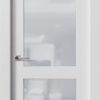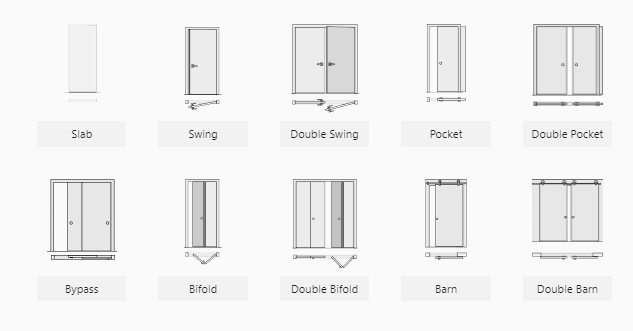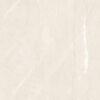Description
THE DOOR NAME ORIGIN – “SHAKER STYLE 2 LIGHT LAMI GLASS”
This interior door model is a perfect example of elegant simplicity.
A number of unprecedented technological breakthroughs already achieved in this century has given our engineers and designers more freedom than their predecessors could even dream of, and our customers access to luxury at amazingly low prices.
Without going into detail, suffice it to say that in addition to being more efficient and far more sophisticated than the traditional finishing process, the “wrap” method effectively fuses the finish and the surface, making the resulting interior door fade-proof, warp-proof, and scratch and moisture resistant, while taking the sound-proofing and thermal insulation properties to an entirely new level.
… The Shaker movement, originating in the middle of the Nineteenth Century and quickly spreading westward from New England, was, in a sense, a reaction to the proliferation of Baroque elements in the Neoclassical style in architecture, as well as in furniture manufacturing. The American and French Revolutions essentially ended the Baroque period. All excessive ornamentation characteristic of its final stage (known as Rococo) was suddenly viewed as poor taste. Classical themes – Greek and Roman – came back with a vengeance, with their austere appearance and unapologetic disdain for excessive luxury.
All major cities were experiencing a transformation – from the extreme sumptuousness of palaces surrounded by asteroid belts of poorly designed elemental squalor to the more humane and relatively democratic multi-story buildings lining up the paved and well-lit avenues. Old habits run deep, though, and here and there in-your-face luxury started to make a comeback. The Industrial Revolution made a lot of formerly nameless folks astoundingly wealthy, and ambitious new wealth will always want to show off as much as possible – to dazzle, shock and overwhelm the unsuspecting innocent bystander with its power.
Annoyed by these developments, groups of New England craftsmen launched a counter-movement, emphasizing simplicity above all, going, not just back to the basics, but all the way back.
It is in that spirit that this line of interior doors was created. In addition, this particular model follows the truly classic two-panel interior door design, with the higher panel larger than the lower one. Like the three classical Greek column orders, this theme has been around forever and is wonderfully easy on the eyes.
The advantages of laminated glass are well known. It is impact-resistant, shatter- proof, and cancels out any type of glare.
As it is with all Almes Doors, this interior door comes with all the enviable features characteristic of our company, such as, to pick one at random, the state-of- the art hardware. This includes the Italian-made 3D-adjustable self-lubricating concealed hinges, with their enormous aesthetic value (not to mention that they make the installation process a lot easier and ensure that your interior door will never creak); the soundless magnetic lock, precise and highly reliable; and the automatic sweep activated when the door is closed.
Elegant simplicity is a tricky concept, requiring the designer to be imaginative and highly innovative while keeping within the boundaries of good taste
FINISH: PRIMED
The advantages of this approach – of this type of interior door finish – are fairly obvious. Pick a color, any color that suits your projects best. Mix and apply. Re- coat whenever you feel it is necessary to do so. Touch it up. It gives you, the proud owner of these interior doors, complete freedom of choice, and the significant savings, especially where it comes to bulk orders, can be a true source of joy.
As Kurt Vonnegut mentions in one of his novels (Bluebeard, unless I’m mistaken … check it out when you get a chance), the thrill of laying on colors is a large part of the artist’s professional satisfaction. In other words, a keen pleasure.
When back in the remote past visual arts became a field dominated by professionals rather than hobbyists, the main problem of “just laying on paint” became obvious: you can’t.
The medium of choice back then was egg tempera, a permanent, fast-drying substance consisting of colored pigments mixed with a water-soluble binder medium, usually glutinous material such as egg yolk. Portraits and ornaments were executed in this medium, and the wood panel was the surface of choice. One of tempera’s interesting features is that it is not as easily absorbed by wood as other mediums. Some sort of primer was necessary, of course, but pretty much any substance that dried evenly could be used.
The drawbacks of tempera, or pintura al temple, as the Spanish call it, only became obvious with the advent of the Renaissance, when the leading representatives of the trade turned to oil (and interior doors suddenly became a great deal less crude, but that’s a story for another day).
Oil painting is the process of “painting with pigments with a medium of drying oil as the binder.” Commonly used types include linseed (highly preferable in art, though not necessarily in interior doors, mind you), poppy seed, walnut, and safflower.
Today, five hundred years later, it is safe to say that oil is more versatile than pintura al temple – by orders of magnitude. Specifically, the contrasts achieved through the former are much greater, the darks are far deeper, and three- dimensional, highly realistic images are much easier to achieve. Next time you visit a museum, take a closer look at pintura al temple portraits. All of them, without exception, come off as a bit “flat” as opposed to their latter-day counterparts.
Also, where glazing is concerned …
Glazing: a painting technique in which a transparent layer, with just a touch of pigment, is laid over a previously painted surface, allowing light to travel through the glaze and be reflected back off of the opaque layer below. Gentle shadows, subtle changes of color, smooth transitions – all these can be achieved through glazing, which was used by all artists up until the middle of the Nineteenth Century, when artist tubes were invented, revolutionizing the field, and other techniques began to be explored.
Tempera enthusiasts (it takes all kinds to make a world) will assure you that glazing is not just possible in pintura al temple but is actually the basis of the whole enterprise. Well, what are you going to do? They’re enthusiasts.
Anyway, la peinture à l’huile, as the French call it, re-introduced the ancient problem of most surface’s propensity to absorb dipingere, as the Italians call the stuff. Wood or canvas, it is all the same: you’re not going to get very far without a good primer.
Experiments were conducted, and soon rabbit skin glue emerged as the least expensive and most effective solution. It was easy to apply. It dried evenly. It made the application of the l’huile stuff on top of it a walk in the park.
There were drawbacks. Today, rabbit skin glue is considered to be a major cause of cracking by most modern conservators. (Remember, when you visited the Metropolitan Museum of Art – and did you see those interior doors? … some of them are quite something … – most “old masters” pictures are completely covered with a cobweb of cracks? There you go). Because the glue is hygroscopic, it continually absorbs moisture from the atmosphere, causing the glue to swell and shrink as ambient humidity levels change. Over many humidity cycles, this repeated flexing causes the brittle oily layers to crack.
To combat this problem, modern primers are made of acrylic materials which are guaranteed not to cause any damage to the dipingere. No bubbling, no cracks. Your interior doors are safe.










